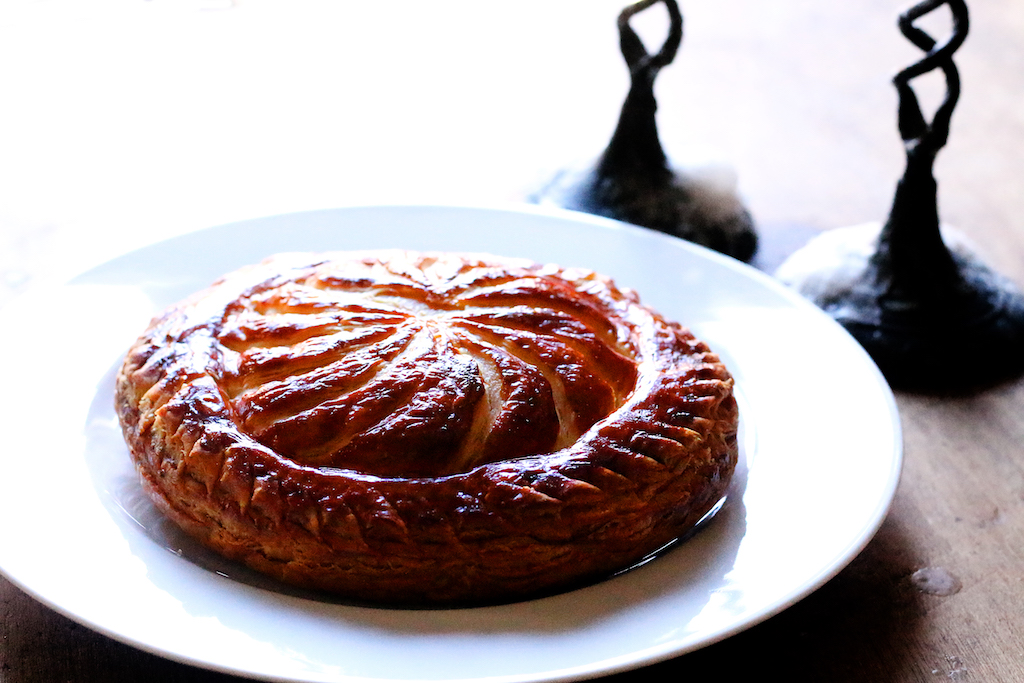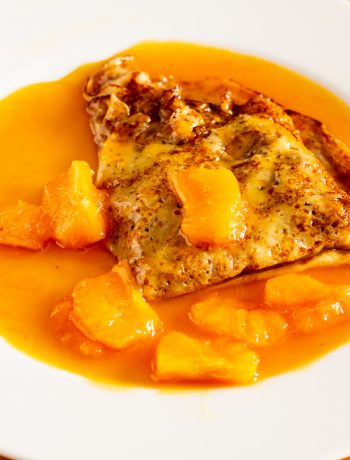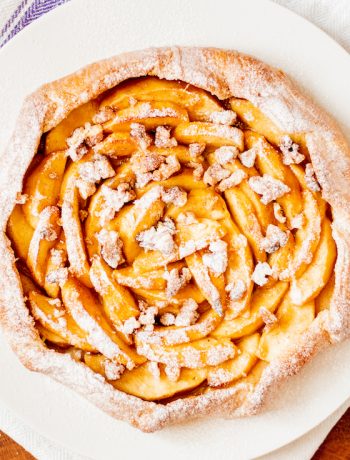The 6th of January is a special day for French children. On this day, pâtissiers and home cooks up and down the country prepare their so-called ‘Twelfth Night cake’ for Epiphany. Epiphany marks the day that the wise men Melchior, Caspar and Balthazar arrived in Bethlehem to bestow gifts on the freshly launched baby Jesus. The French tradition for the day is to make a ‘cake’ of pastry filled with frangipane and to hide a charm known as a ‘fève‘ inside. The child served the slice containing the charm is crowned ‘king for a day.’ Presumably, the precocious little shit is then allowed to lord it up over his elders for 24 hours while his parents bear the tradition of galette des rois through gritted teeth.

Interestingly, the Romans used to have a festival called ‘Saturnalia‘ that occurred around the time of the winter solstice. It was this pagan festival of mid-winter that the Church essentially nicked when they needed a convenient date with a recurring party on which to place Christmas. During Saturnalia, the Romans would play the same game of ‘king for a day’ by hiding a bean inside a cake. It is inconceivable that the French tradition did not arise from the Roman one.
The galette des rois has had a bit of an on/off relationship with the actual Rois. In the court of King Louis XIV of France, friends of the king would play the the game, and the King would proclaim the winner of the fève king for the day, and even allow him to appoint ambassadors and ministers. The women who became queens for a day were granted a special wish known as a ‘grâces et gentillesse.’ Sadly, history does not record the nature of these wishes.

However, all this frivolity came to a crashing halt in 1711 when the Louis XIV was forced to ban the galette des rois due to a famine. All flour was diverted into the manufacture of bread, and pâtissiers were told to stop making pastry. Of course, in classic French style, many of those outside Paris just shrugged the usual “Non, je vais continuer,” which meant that the galette was not lost to history.
The dessert had another upset during the French Revolution. The revolutionaries, keen to erase all mention of nobility from the culture of France in a series of actions that would make even George Orwell raise his eyebrows, renamed the cake the ‘galette de l’Egalité,’ which means ‘equality cake.’ Not even a British Labour-run council could come up with something so transparently daft as that. The new name did not stick, and the galette des rois was back on the menu.
In the recipe given here, we have gone spelunking into Larousse to get the most traditional recipe we can find. This involves making a crème pâtissèrie (confectioner’s cream), and flavouring it with almonds to create a frangipane. Puff pastry is bought (because who the hell has time for that?), and the cake is assembled using those components. Success in the decoration is entirely dependent on actually following the repeated chilling steps. Ignore these at your peril.
Galette des rois
Ingredients
- For the crème pâtisserie:
- 25g plain flour
- 80g caster sugar
- Pinch of salt
- 7g unsalted butter
- 2 eggs
- 1 vanilla pod
- 250ml milk
- For the frangipane:
- 100g softened butter
- 100g caster sugar
- 100g ground almonds
- A few drops of vanilla extract
- 1 tbsp Navy rum
- 200g of the crème pâtisserie
- To make the cake:
- 500g ready made and rolled puff pastry
- 1 egg, beaten to glaze
Instructions
To make the crème pâtisserie, put the flour, sugar, salt, butter and eggs in a heavy saucepan and work the mixture with a whisk until combined. Heat the milk in a saucepan with the vanilla pod until it boils. Add the milk to the dough mixture, stir well and boil moderately for a few minutes, stirring constantly. Remove the crème to an earthenware dish to cool, stirring occasionally.
To make the frangipane, mix the softened butter, sugar almonds vanilla and rum. Mix in 200g of the crème pâtisserie until smooth. If you taste this, you will realise that this is exactly the stuff that is inside an almond croissant.
To make the galette, heat an oven to 190˚C. Cut the pastry around a couple of plates to make two identical circles. Put one of the circles on some baking parchment on a baking tray. Brush the egg around the edge of the circle on the tray. Spread the frangipane onto the brushed pastry circle using a palette knife. Add a fève to one quadrant if using. Drape the second pastry circle over the top. Press the two edges of the pastry together firmly all around the cake. Use the tine of a fork or the back of a knife to score the edge – this makes a nice decoration, and also improves the seal.
Now it is time to do the decoration. Success depends on keeping everything cold. Chill the galette in the fridge for 10 mins. Remove and brush over with the beaten egg. Do not get the egg too close to the edge of the galette, or it will seal the pastry layers and prevent it from rising. Refrigerate the galette a second time, and brush more egg. Refrigerate one more time. This will give you a good, stiff surface to carve. Using the edge of a knife, make a design on the top of the galette. Cruise the Internet for design ideas. The most frequent design is the spiral one shown in the picture that accompanies this recipe.
Bake the galette in the oven for 25 minutes, turning it once at the halfway point. Cool on a cooling rack. Serve with a cardboard crown for the little king.






No Comments